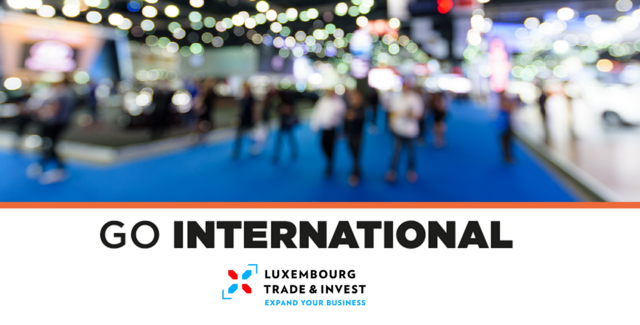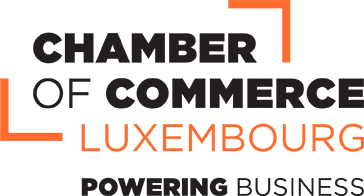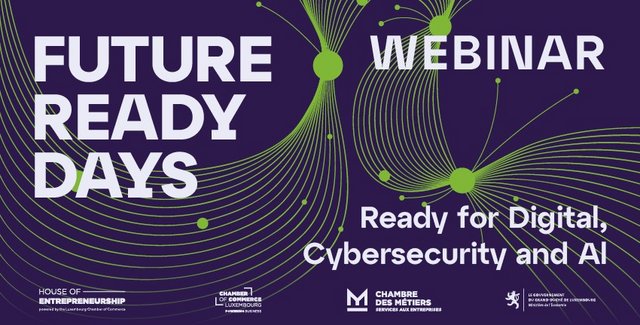

SES is a global company known for its satellite technology and the incredible communications opportunities they offer to the world. It all began in Betzdorf, within the castle walls that saw the birth of Grand Duke Henri and all of his siblings. Merkur, along with Steve Collar, SES’s President and CEO since April 2018, offers you a more intimate look at this company that is a source of great national pride.
Everyone thinks they know SES and it is a source of national pride for Luxembourg, but what exactly is the nature of the company’s activity today?
“SES is the world’s leading satellite operator with over 70 satellites in two different orbits, Geostationary Orbit (GEO) and Medium Earth Orbit (MEO). We launched our latest 4 MEO satellites in April and we now have a fleet of 20, which is unique in industry. We provide a diverse range of customers with global video distribution and data connectivity services through two business units: SES Video and SES Networks. The SES Video portfolio includes broadcasting to over TV 8,000 channels and has the largest DTH television reach in Europe.
SES Networks provides global managed data services, connecting people in a variety of sectors including telecommunications, maritime, aeronautical, and energy, as well as governments and institutions across the world. The SES Networks portfolio includes GovSat, a 50/50 public-private artnership between SES and the Luxembourg government.
Who are the customers of SES?
“We have customers in many business segments around the world, including video broadcasters, internet service providers, cruise lines, major telecom carriers and governments.
How could such a giant come from such a small country?
“The global space industry underestimated Luxembourg at first. When Luxembourg began to invest into its national space programs, it was still a small player in the global markets. The government made the decision to invest significantly into the development of the space industry within its borders, and SES would not be where it is today without that investment. Thirty years later, SES is a global company with over 2,000 employees and a leadership position in industry.
You are loyal to Betzdorf Castle for the office headquarters. Is this building suitable for a 21st century enterprise?
“Our campus in Betzdorf is loved by employees and visitors alike, due to the mix of the historical and the modern. Seeing the castle where the Grand Duke was born with a backdrop of our antenna field collecting signals from 35,000 km in space reminds us how far we have come in such a short period. From a geographical point of view, Betzdorf Castle’s location, in the middle of Europe, surrounded by nature and on a hill facing South, is perfect for our antenna field.
The beauty of the Chateau is also complemented by the other highly technical and modern buildings on campus, reflecting the old vs new architecture seen throughout the city of Luxembourg.
Do you consider SES a Luxembourg or international company?
“The satellite industry is by nature a global business. Our customers are all over the world, our company has 22 locations across all continents and our signals reach 99% of the globe. We’re a global company based in Luxembourg and we’re proud of the partnership with the Luxembourg government.
Do you have competitors? Who are they?
“Our competitors include other satellite operators in the geostationary earth orbit, with whom we also at times collaborate to reach mutual goals. We are the only MEO satellite operator. There are also new players aiming for low earth orbit where we do not operate, and it will be interesting to see how this area develops. But we are focused on growing our capabilities and continuous innovation in the proven areas of GEO and MEO.
What are the key factors driving success in your sector?
“It’s incredibly important to never get complacent in our position. The space sector is one of the most growing and exciting sectors today, there are startups all around the world entering this field and some manage to disrupt it. To be successful, we must keep up with this fast-growing and changing industry from a technology perspective as well as keeping our business strong to ensure we continue to innovate and invest in the future.
Let’s talk about the environment. How long does a satellite last? What happens to those that are no longer in use?
“Many of our satellites have a designed lifetime of 15 years but many have proven higher longevity. After this period is complete, if the satellite is still in good working order, the service may be extended. If we must retire the satellite, we will re-orbit the spacecraft to another location above the active satellites. One of the innovations we are working on is called SES Next, whereby the satellite will be able to be reprogrammed once it is already in space, extending the useable life of the satellite and allowing more flexibility for orbital locations and customers.
Can one satellite serve multiple customers?
“Absolutely. We serve our customers through various blocks of the spectral capacity we provide, which they use for the service they need. This allows one satellite to be used for data and video, to ships, airplanes, and on land all through the same system.
Do you easily find the staff profiles necessary for the company’s development?
“Finding the right talent is never easy and this is true beyond the space industry. As our technology and communication solutions evolve in line with the markets in which we operate, our skills requirements also rapidly change. For example, in the past we have successfully hired many world-class engineers and technologists in the satellite industry. Moving forward and with the forthcoming launch of a new constellation of satellites to address other commercial markets, we will be recruiting more highly-skilled individuals with backgrounds in computer science and telecommunications networks. We also place equal importance on hiring the very best talent in all our other business functions. It is very important for us to drive new levels of engagement with our target candidate markets who may not necessarily be aware of the fantastic value proposition we offer our employees. The talent market both in Luxembourg and globally is extremely competitive so we have to be proactive and ensure a top-class candidate experience.
Out of all of the countries that you operate in, which ones do face a lack of available talents?
“To a varying degree, we face challenges in all countries, especially when it comes to STEM (science, technology, engineering, and mathematics) functions. For example, in the U.S., we compete for talent with the biggest names in the technology sector, not just satellite. With very low levels of unemployment in areas like Washington D.C., Virginia and New Jersey, it is very much a candidate-driven market. Recently, our research has shown that there were more than 10,000 vacancies for software engineers and developers posted online within a 25-mile radius of one of our facilities, a very significant factor in being able to engage and attract talent. Fortunately, as a leader in our industry with a strong heritage of innovation, we have been successful in attracting – and keeping – top talent, which is critical in a business like ours.
Where do you find these profiles you need and how do you attract them?
“We use various methods. Primarily we have a dedicated internal international recruitment team who are trained to focus on proactively engaging and sourcing candidates. We also make extensive use social media platforms and other specialist online tools. We have a network of trusted and preferred external recruitment partner companies to support the team as and when required. We have very strong relationships with top universities around the world, and we are continuing to develop new partnerships in specific academic fields. Moreover, whichever medium we use, we try to attract talent by sharing our purpose and our culture. We do extraordinary things in space to enable our customers to do amazing things on earth that make a real difference to the lives of millions of people around the world. Our employees share a very diverse environment but a common culture of being in it together and being proud to work at SES. A culture that is honest, courageous and transparent and where our people are also provided with the opportunity to give back in whichever way they wish.
Next year the company will turn 35. What do you hope to see for the future of the company?
“I like to call SES a “30-year-old startup”. In fact, although we are now well established in the industry, we continue to operate like a startup in that we are always innovating. Space is such a fast-moving and attractive field, and everyone at SES shares the passion to continue evolving with the times. With SES Next and O3b mPOWER in particular, we see a positive evolution of our business in the years to come and look positively towards the future.”
Photos: SES




